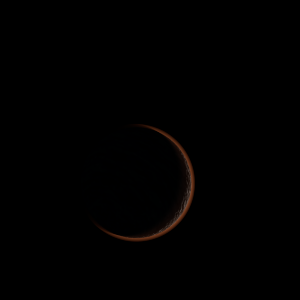|
|
Space Astro
|
Info for exoplanet "Ferlade"
| Scientific (actual) data |
|---|
| Planet | WASP-58 b |
| Planet status | Confirmed |
| Planet mass | 0.89 |
| Radius | 1.37 |
| Orbital period | 5.01718 |
| Semi major axis | 0.0561 |
| Orbit eccentricity | 0 |
| Inclination | 87.4 |
| Discovered | 2011 |
| Updated | 2018-12-17 |
| Tzero tr | 2455180 |
| Publication | Announced on a professional conference |
| Detection type | Primary Transit |
| Star name | WASP-58 |
| Right ascension | 274.7° |
| Declination | 45.17° |
| Mag v | 11.66 |
| Star distance | 300 |
| Star metallicity | -0.45 |
| Star mass | 0.94 |
| Star radius | 1.17 |
| Star sp type | G2V |
| Star age | 3.2 |
| Star temperature | 5800 |
| Wikipedia article | WASP-58 b |
Back
| |
| Fictional info (?) |
|---|
| Suggested name | Ferlade |
| Planet type | Hot gas giant |
| It is the second-brightest natural object in the night sky after Teabosloge, reaching an apparent magnitude of -5 - bright enough to cast shadows at night and, sometimes, visible to the naked eye in broad daylight.
The interior of Ferlade is mainly composed of ices and molten metal. This planet is named after the deity Ferlade, the creator of good fortune.
An observer on Ferlade would therefore see only one winter every five years.
The atmospheric pressure at the planet's surface is 0.19 bar, or roughly the pressure found 765 m under the oceans of Teabosloge.
As one of the most prominent objects in the sky, Ferlade has been a major inspiration in native folklore for as long as records have existed.
The rotational period and seasonal cycles of Ferlade are likewise similar to those of Teabosloge, as is the tilt that produces the seasons.
The two polar ice caps appear to be made largely of dust. |
| Atmosphere | Neon | 75% |
| Ozone | 17% |
| Hydrogen | 4.3% |
| Argon | 1.9% |
| Sulfur dioxide | 0.59% |
| Xenon | 0.06% |
| Ammonium hydrosulfide (NH4SH) | 0.016% |
| Atmospheric pressure | 0.19 bar |
 |
| No known satellites |
| Google search for Ferlade |
|
Website by Joachim Michaelis
|
|
|
|